

Sometimes coincidence writes the best introductions: last August, we were just following the flaming exhausts of two Ferrari F40s down Albula Pass for an event feature, when we spotted a car that’s an even rarer sight in the Swiss Alps than any unicorn Ferrari. Was that really a jacked-up AMC Eagle with a roof rack and Burton stickers leaving the road into the woods? Triggered by curiosity, we abandoned the howling F40s and went after the quirky American offroader. After a short drive, we caught up with it in front of an old industrial building, a sawmill or a rural workshop, with a classic, bright red railway carriage of the iconic Rhätische Bahn and a matching red Maserati Bora casually parked in front of it. The AMC came to a hold – and to our surprise, the driver turned out to be Adrian Elmiger, a former Classic Driver team mate that we had lost touch with some years ago. Laughing about the improbable reunion and exchanging high-fives before secretively leading us towards the warehouse, Adrian explained to us that he was just about to open his own private museum. Did we want a sneek peak?
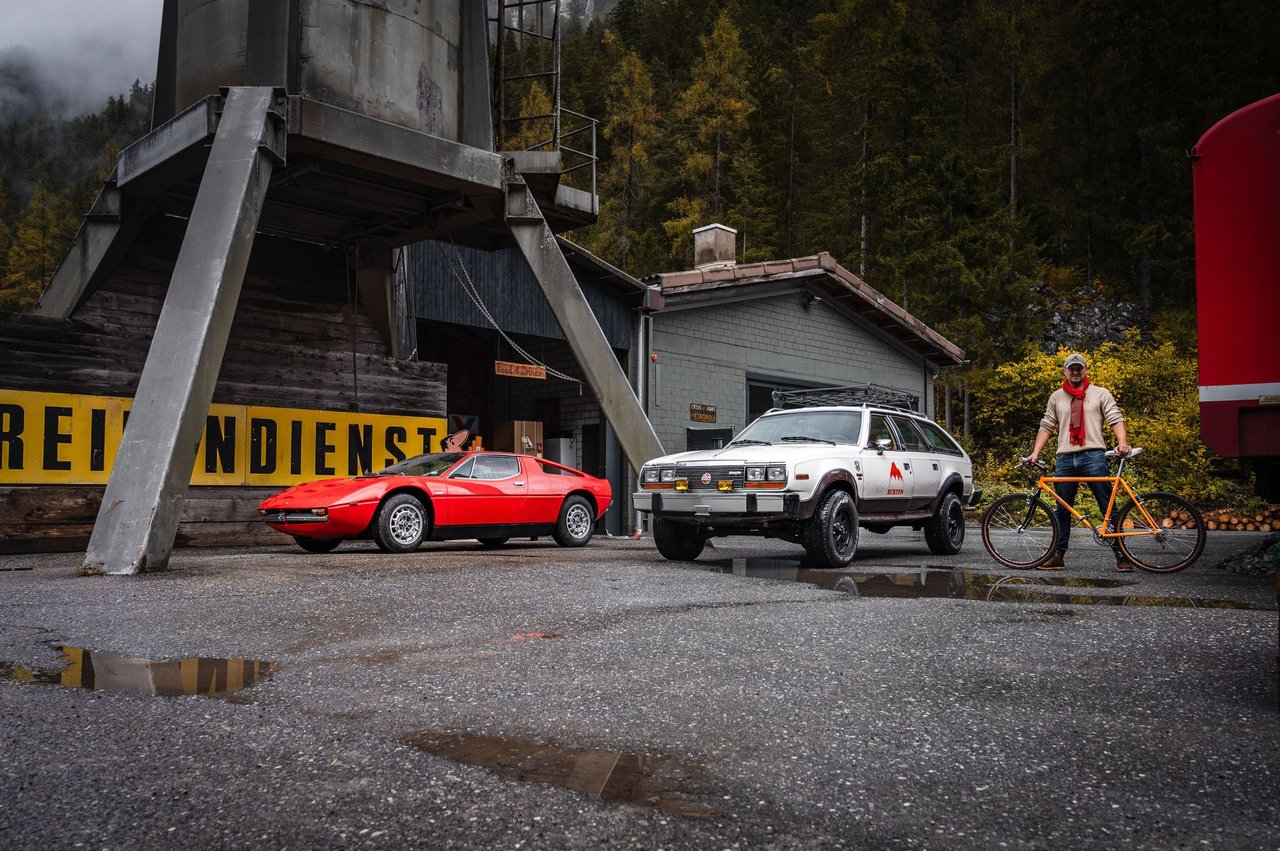
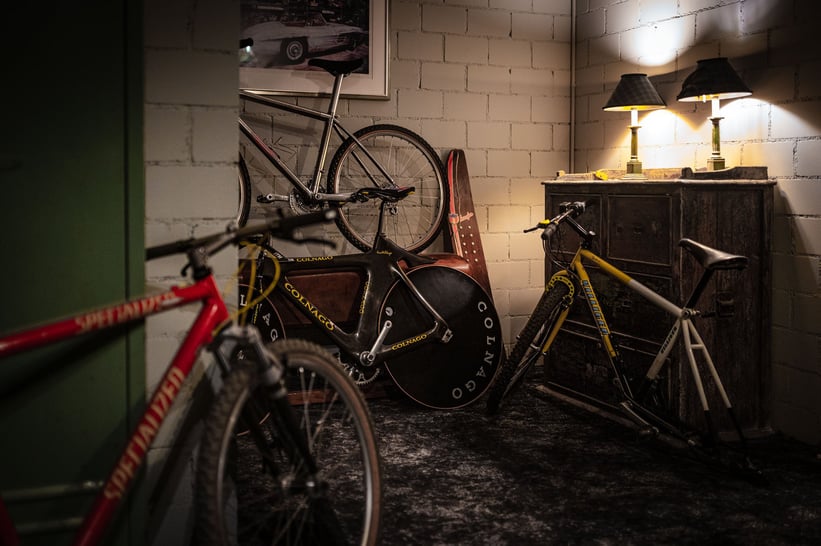
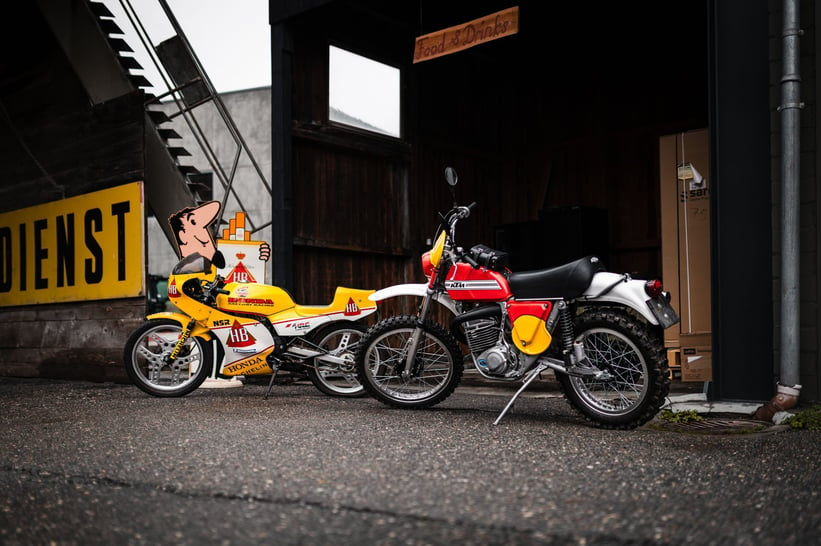
Adrian unlocked the door – and we stood in the middle of a vast, moodily lit hall filled with countless classic bicycles of all styles and shapes, as well as a bar, a grand piano, a lounge area, a DJ booth stacked with vinyl house records – and a Castrol-livery Toyota Celica GT with the matching racing motorbike parked next to it. There were neon-coloured snowboards leaning against a walls, helmets, posters and vintage advertising graphics. Just like in the Spike Jonze movie “Being John Malcovich”, it felt like we had literally entered the mind of a collector obsessed with bikes, cars, sporting gear and pop culture from the 1980s and 1990s. Overwhelmed and excited, but in a rush to keep up with the rallye, we promised to come back soon for a proper inspection. And some weeks later, on a rainy autumn day, we were back at Adrian’s fantastic alpine reduit to learn more about the concept and collection.
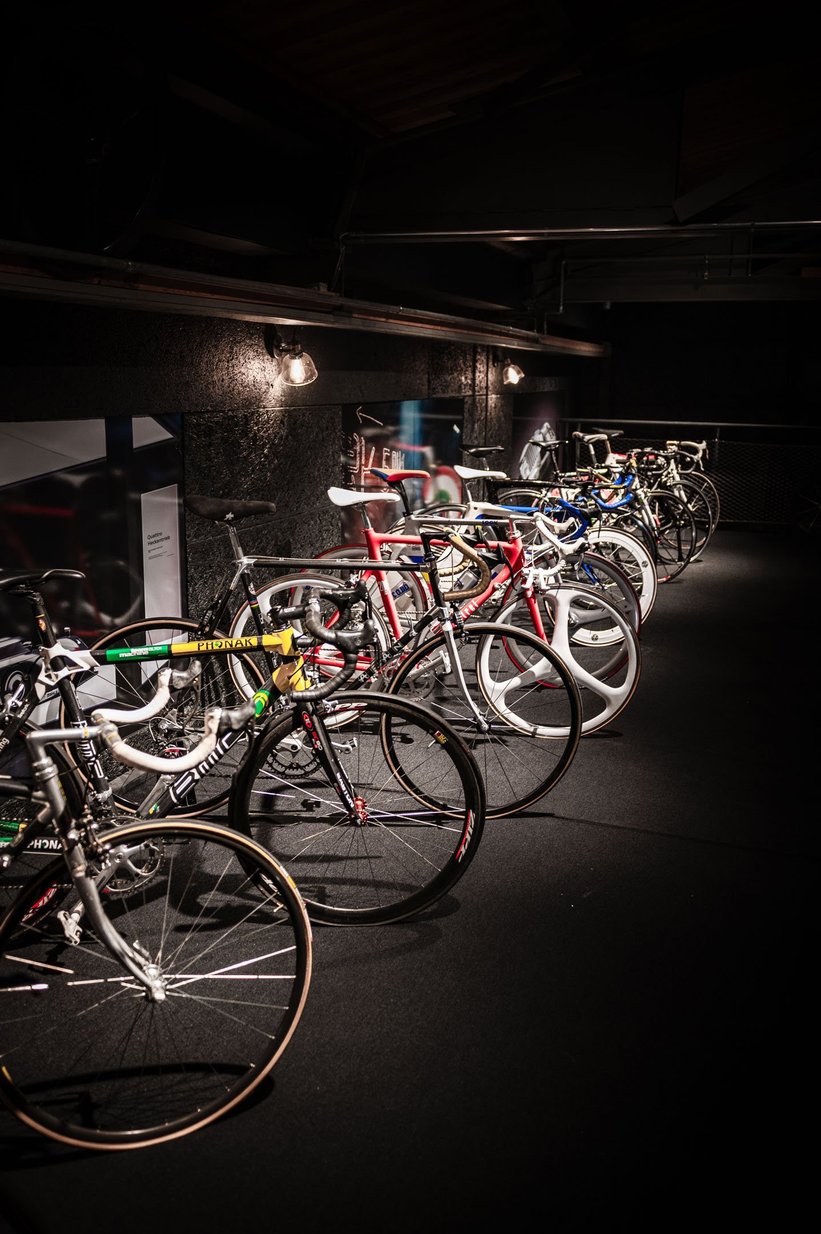
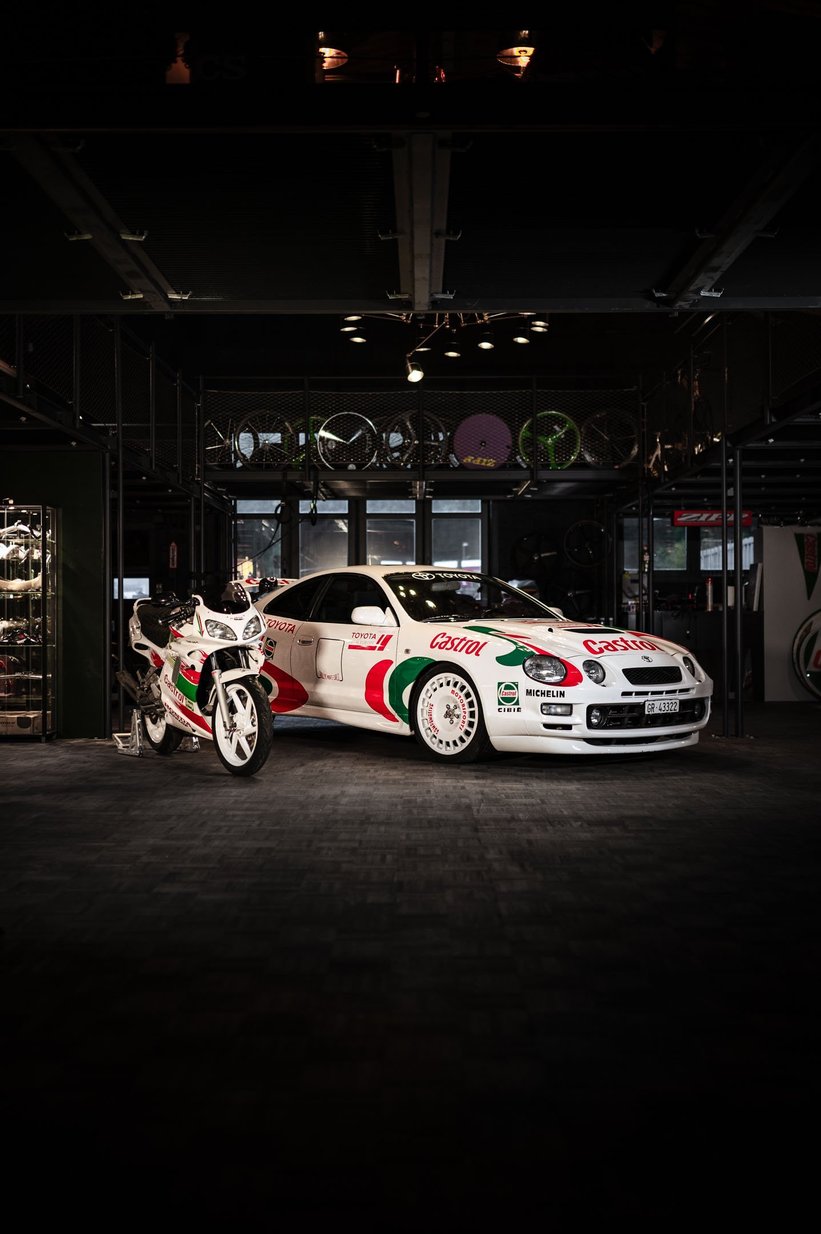
Adrian, this place seems like your own private paradise, a collector’s dream come true. Looking at all these fascinating carbon bicycles, motorbikes, cars and pop-cultural artefacts, can you still remember what triggered your passion?
In fact, I became passionate for carbon bicycles in the late 1980s. I was 12 years old and standing in front of a bicycle shop in Zurich. There was a Koga Miyata Carbolite Full-Pro in the window – it was beautiful, light, I thought it was incredible. Unfortunately, at 6,000 francs, it was unaffordable even back then. At the same time, my father bought his first classic car, a Fiat Toppolino. After that there was no stopping him and new cars kept coming: pre-war, post-war, from England, Italy, the USA. At that time I let myself be infected by the passion, but also learned how not to collect. I knew that once I started a collection, it had to be coherent – and have something to do with me. However, the cars that excited me were all already priceless.

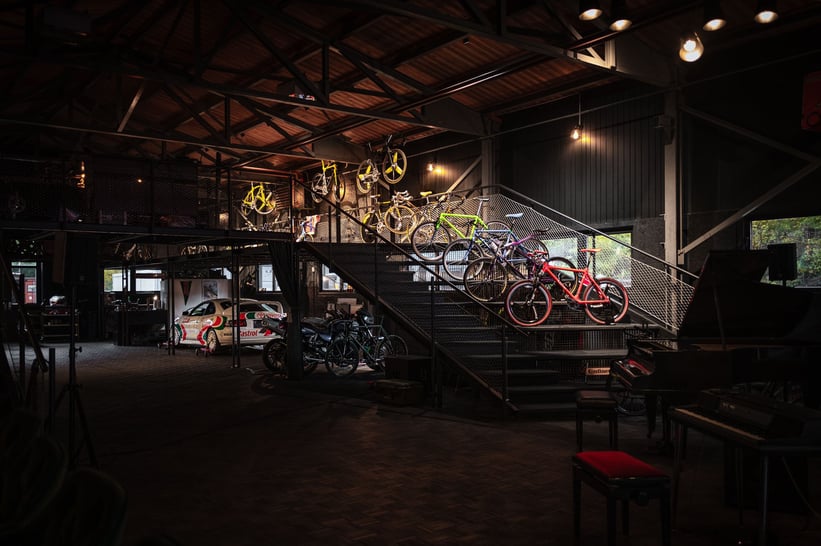
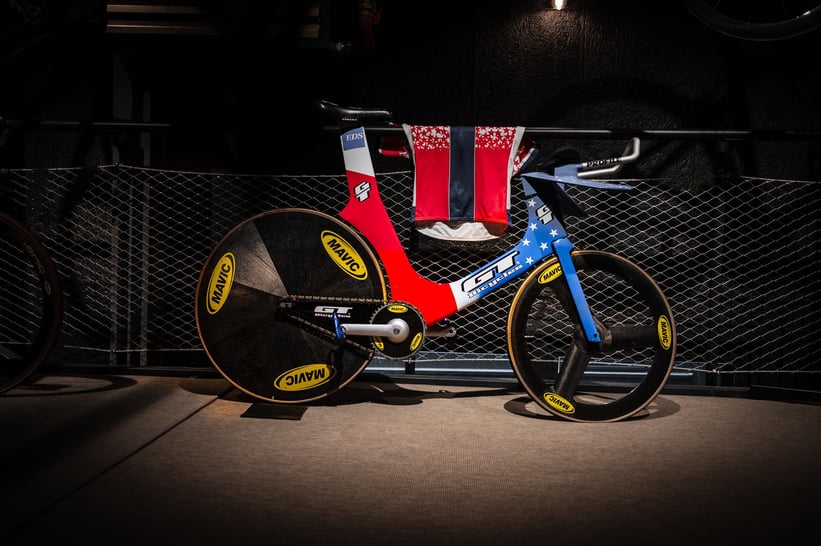
So you decided on the racing bikes of your youth.
Exactly. The era that had the greatest impact on me personally was the beginning of the carbon era in cycling in the late 1980s and early 1990s. All of a sudden, bikes like the Lotus 108 or the Pinarello Espada emerged. Their looks blew you away at first glance. It was also a very exciting time in motorsport – we all remember Group 5, Group B and DTM as the golden era. After my father's death, my brother and I dismantled his collection; many of the cars simply didn't suit us. So I started buying the carbon bikes I dreamed of as a boy, one by one. In the last ten years I have found almost all the great icons. And I have created – I think I can say this – the largest, certainly the most complete collection of carbon racing bikes in the world with around 130 examples. My collection begins in 1975, extends to the late 1990s and ends today. Technical developments have been limited since the year 2000, as the UCI cycling organization has since then strictly limited the weight and shape of the wheels.
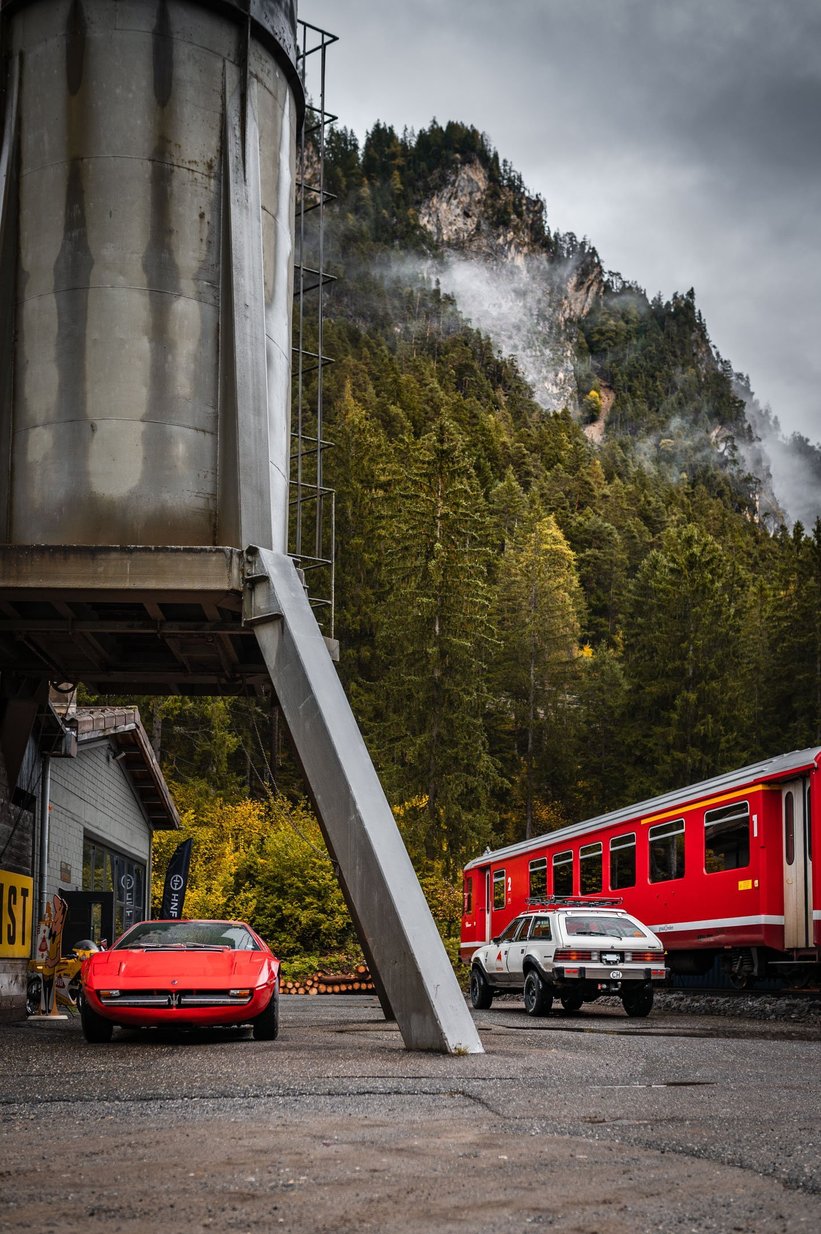

The location you chose for your collection isn't exactly common either.
I was always looking for a home for my collection somewhere between Zurich and St. Moritz. At some point an advertisement popped up for an old sawmill in Filisur. At first the hall was full of dirt and sawdust, but we made something of it, put in industrial parquet and a mezzanine, and the old wagon in front of the door.

What are the centerpieces of your collection?
If you look around here, you'll find all the important milestones in carbon bike history – from the Colnago C35 Oro Edition to the Pinarello Espada, of which only six were built. One is with tennis star Rafael Nadal, one with five-time Tour de France winner Miguel Indurain, two with Louis Vuitton. One is owned by a good friend who also collects and likes cars. And one with me. The earliest carbon bike in my collection is an Exxon Graftek from 1976 – the company bought the patent from some young students. Then there was a long break, the next bike is a Peugeot from 1984. The Colnago Carbon Volo is, along with the Kestrel, one of the first carbon monocoque bikes in the world. One of my favorite bikes is an Alan Super Record, beautiful and delicate. By the way, the right components such as brakes, pedal sets and gears are often significantly more valuable than the frames themselves, simply because they are so rare in good condition. Of course, particularly the extremely designed bikes are eye-catchers: the Pinarello Parigina won gold at the 1996 Olympics in Atlanta – the design was aerodynamically at the limit; today this shape with a small front wheel and no top tube would be banned in competition.
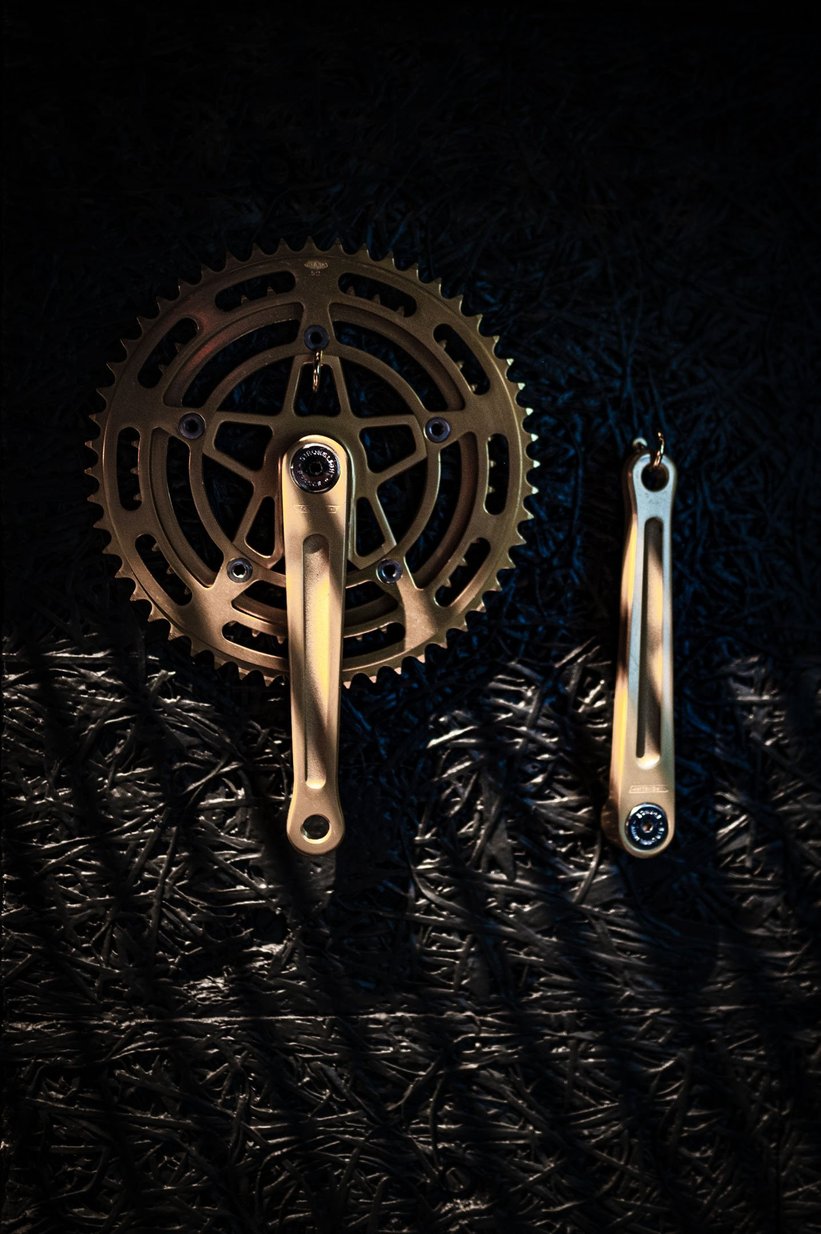
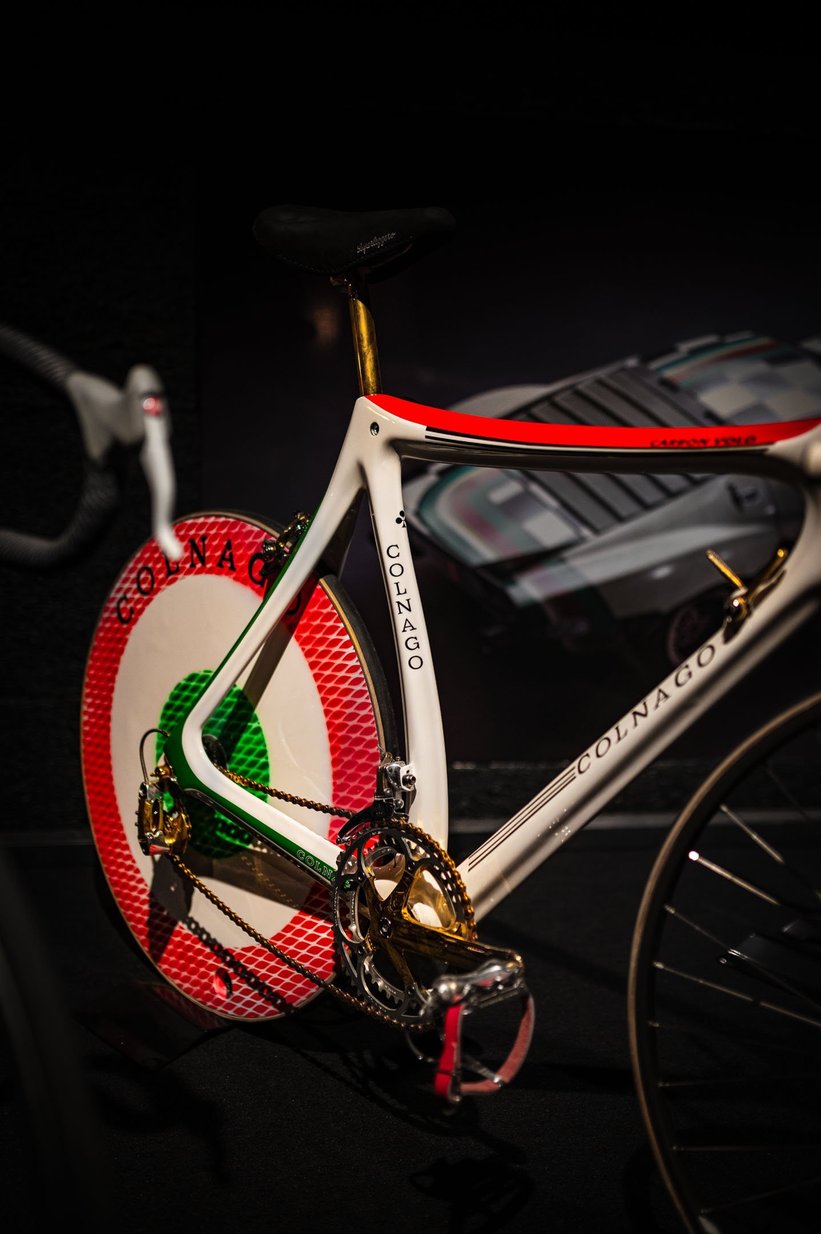
Why has carbon had such a strong influence on cycling?
Carbon has fascinated the sports world since the 1970s, when it emerged as a lightweight material in aviation. But the production was extremely complex. At that time, steel was still the benchmark in cycling. In the 1980s, brands like Kestrel and Colnago built the first monocoques. It was often textile specialists from the silk weaving sector who knew how to weave the carbon. The first prototypes with carbon tubes were glued with sleeves and were very fragile; they often fell apart during the first test drives. It took a long time for the carbon wheels to actually become raceable. Colnago built the first full carbon bike in 1994 with the C40. The industry waved it off at the time, but then the bike achieved a five-fold victory in the Paris-Roubaix race. And when the super-futuristic Lotus 110 started at the prologue of a Tour de France for the first time, the spectators went crazy. Meanwhile, the competitors on the steel wheels were extremely annoyed. After that there was no stopping. The variety of forms exploded back then. For me as a collector, the focus is therefore on design.
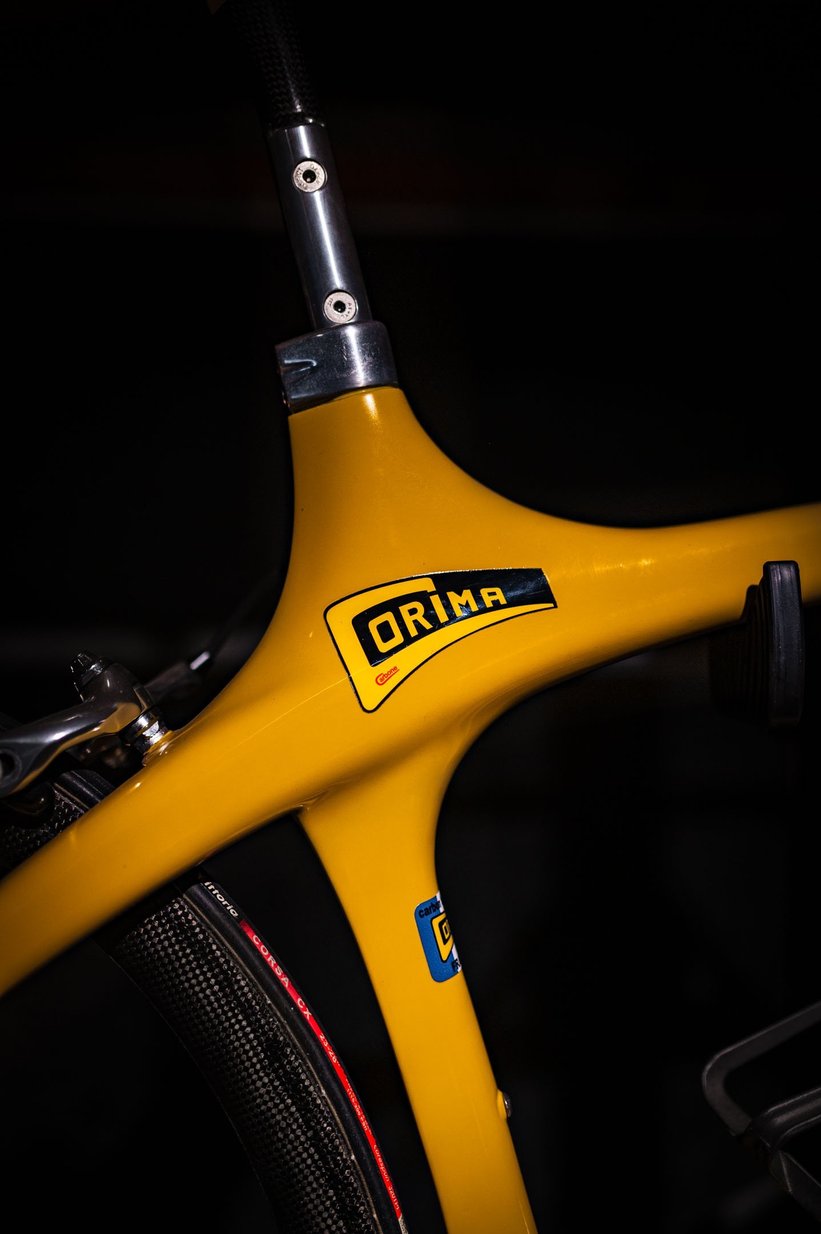
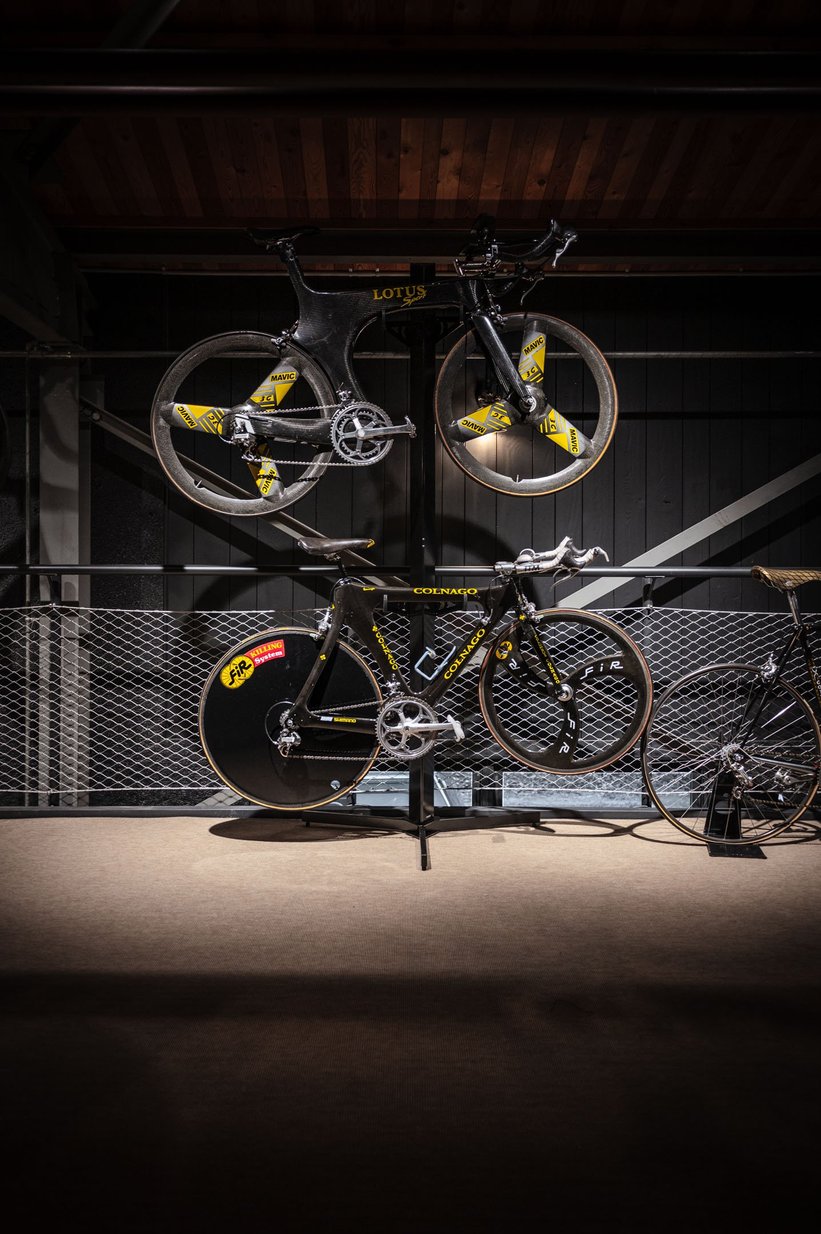
Were there any collaborations with the automotive industry when it came to carbon production?
There were! In the mid-1980s, only the Formula 1 racing teams had experience with the complex production of carbon. And so, for example, Colnago worked closely with Ferrari on the development of the C35 carbon bike.
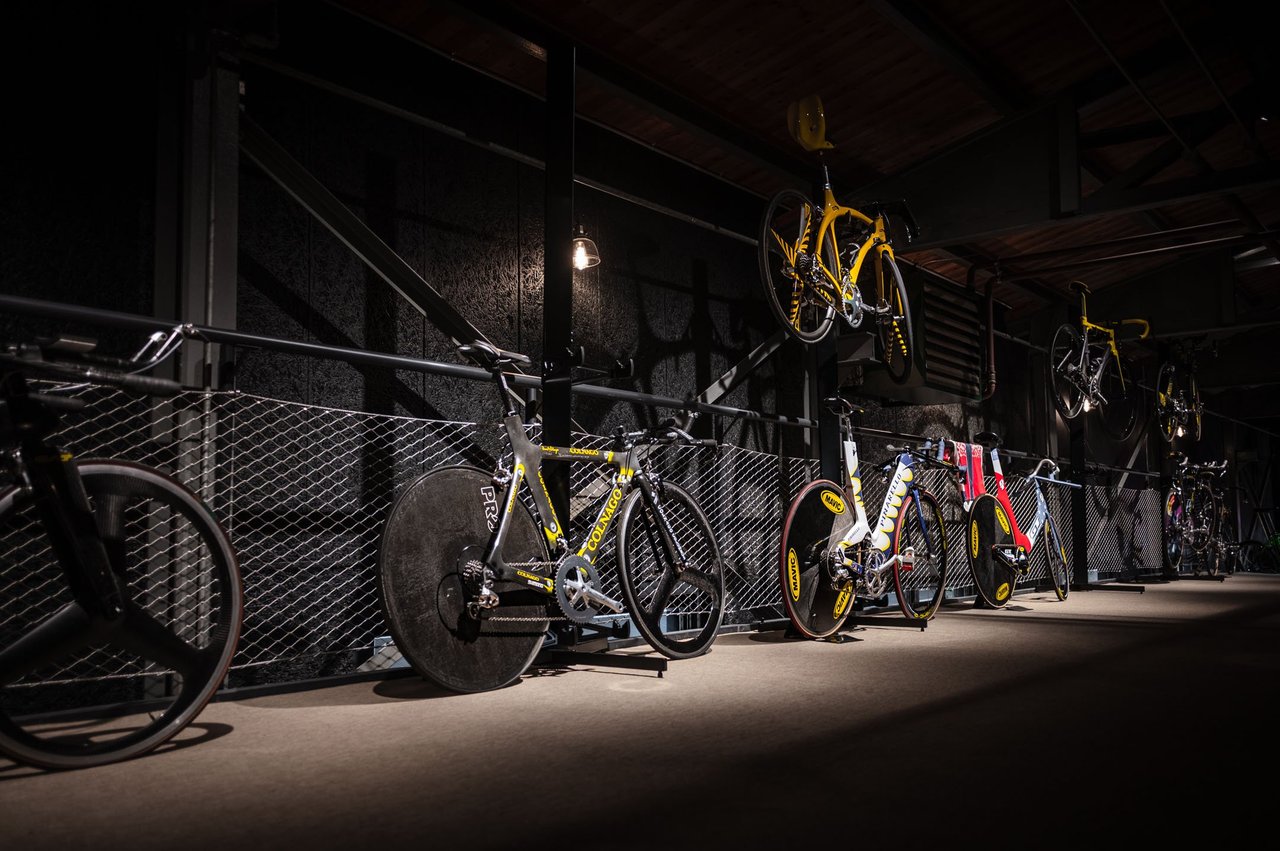
Today most cyclists sit on a carbon frame. Is carbon still the measure of all things? Or are there exciting new materials and technologies?
Many solutions that are sold to you today as innovations already existed in the past: spoke design, frame design, suspension, rear brakes, bottom brakes, aerodynamic casings. If you want to know where you are going, you first have to understand where you come from. That's why bicycle developers regularly come to my collection to be inspired by the solutions of the past. At the same time, there are certainly exciting new technologies: there is a lot of experimentation with additive manufacturing, with aluminum and titanium from the 3D printer. Filippo Gamma set a new world record in 2022. His bike came entirely from the computer, it was CFD-optimized and 3D printed. If the cycling organization UCI were to release the weight limitations, then we would probably see super-light and hollow structures made from graphene. Enginners are also experimenting with printing carbon fiber. The race is open and it remains exciting.
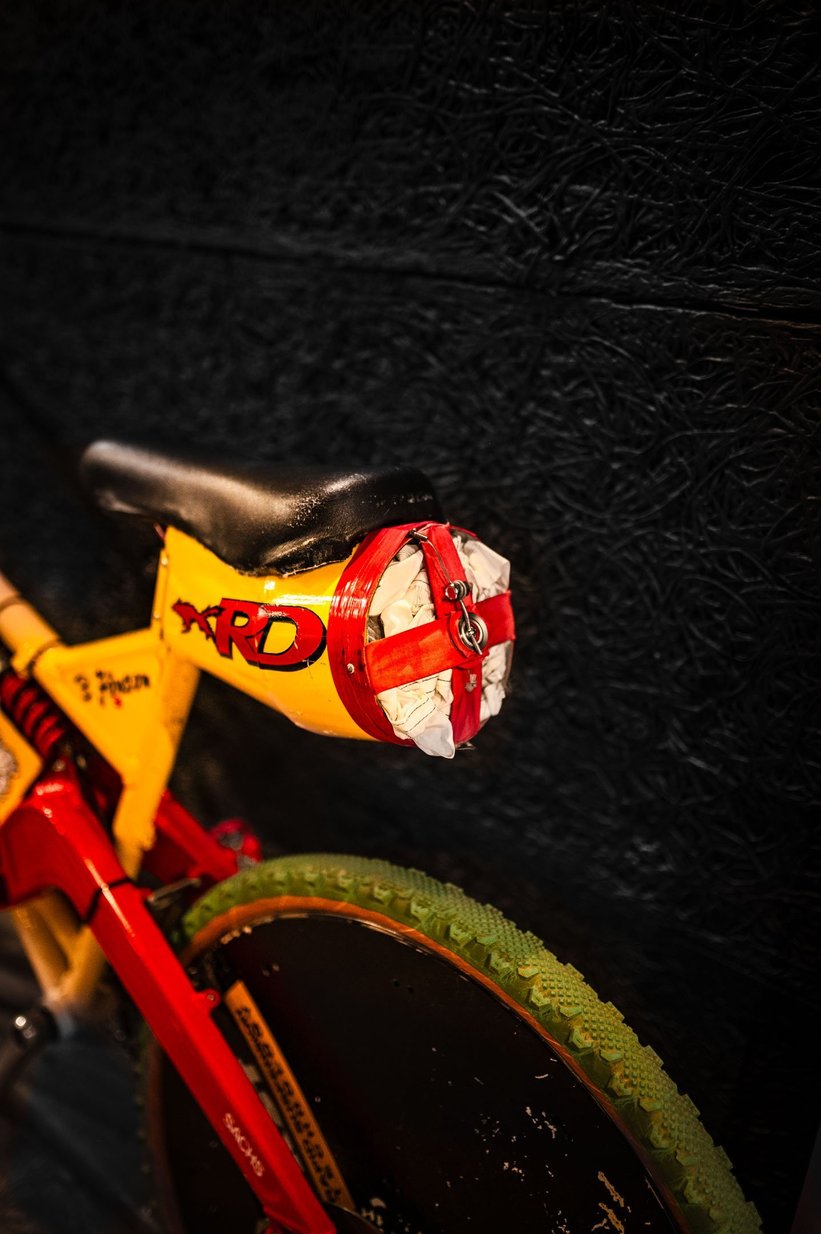
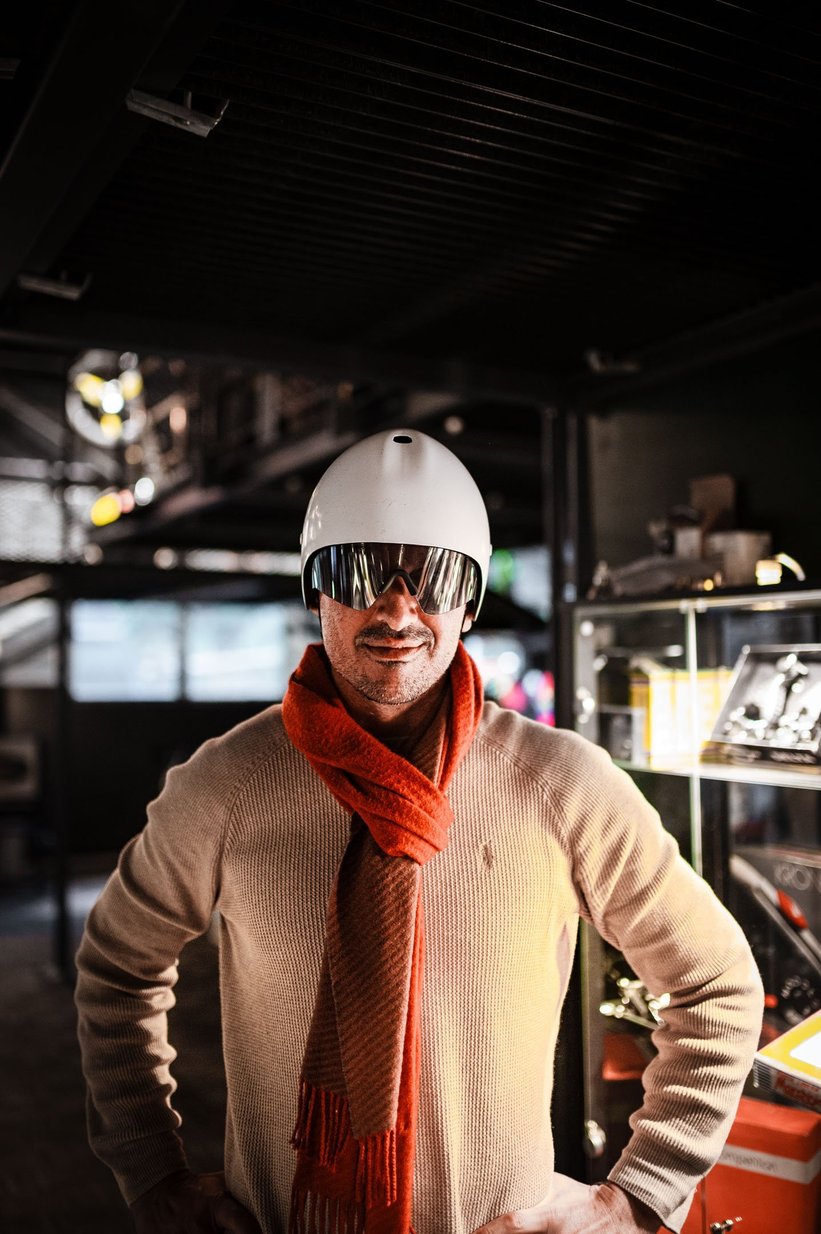
With the Albula Pass you have one of the most beautiful Alpine roads in Switzerland on your doorstep. Do you ride the old carbon bikes on the pass yourself?
Absolutely. And that's really an experience, because the gear ratios from back then are usually so hard that nobody would drive like that today. When you get to the top of the pass, you know what you've achieved (laughs). I also have a few early mountain bikes that I use to explore the trails here.
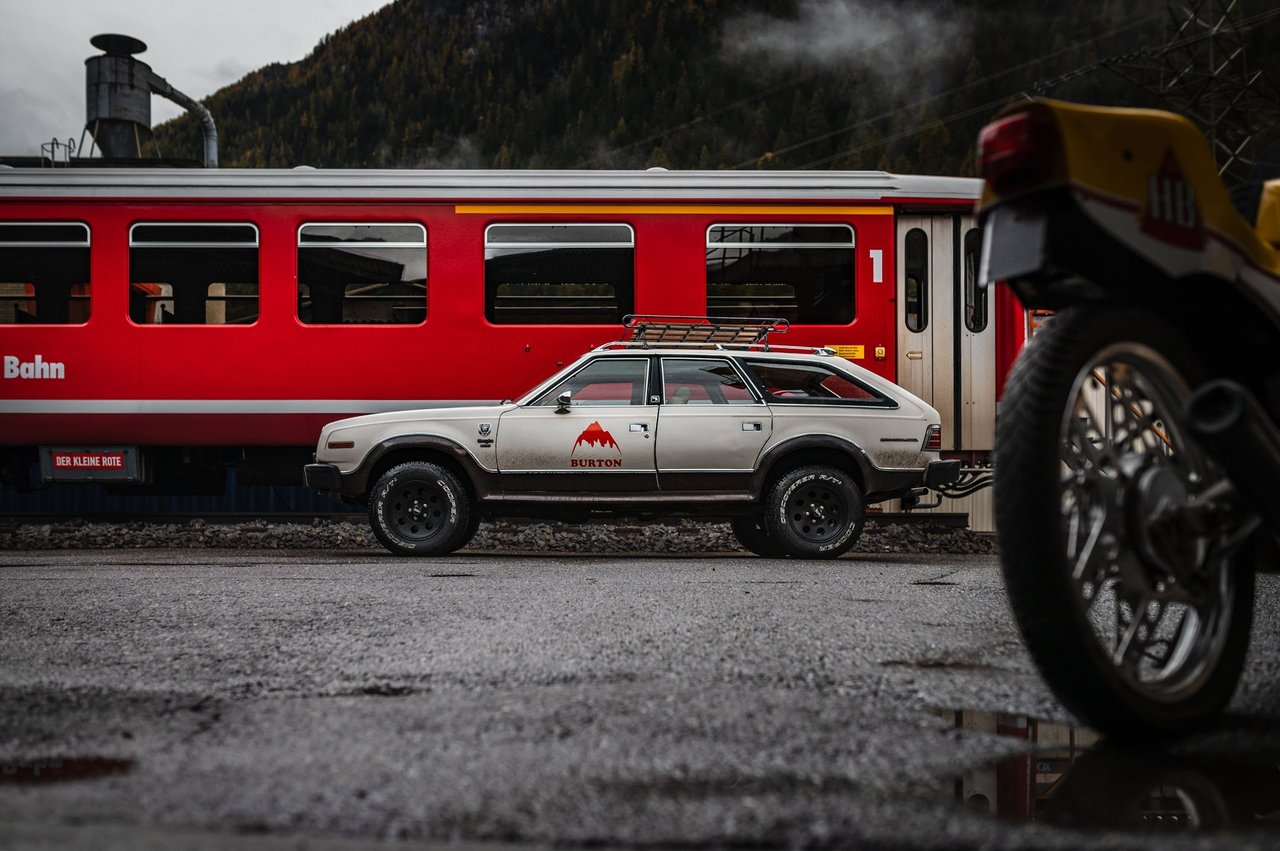

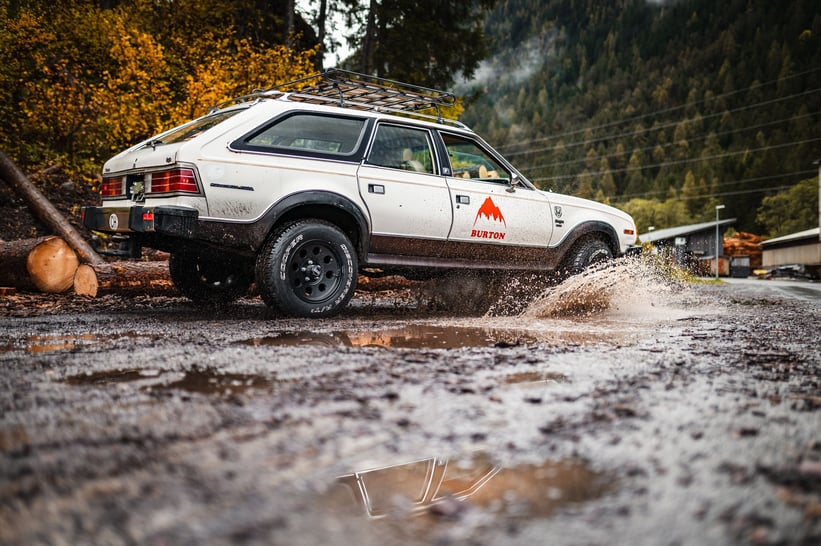
As I know from your time at Classic Driver, your heart still beats for special automobiles – and there are some really unusual off-roaders here, such as the AMC Eagle. What kind of cars are these? And what fascinates you about them?
I have a weakness for car brands that no longer exist. And one of those brands is AMC. Most people know the De Lorean from “Back to the Future”– but I was much more interested in the brown, raised station wagon that the father of Marty McFly’s girlfriend Jennifer drove through Hill Valley. Turns out it was an AMC Eagle. For me it was the perfect car, it has all-wheel-drive and you can easily load a bike or go snowboarding without worrying abou the car too much. It was built from 1980 to 1987 in many obscure variants and is, so to speak, a forerunner of today's SUVs and safari off-roaders. AMC also made other strange cars like the Pacer and the Gremlin. But they were ahead of their time and failed miserably.
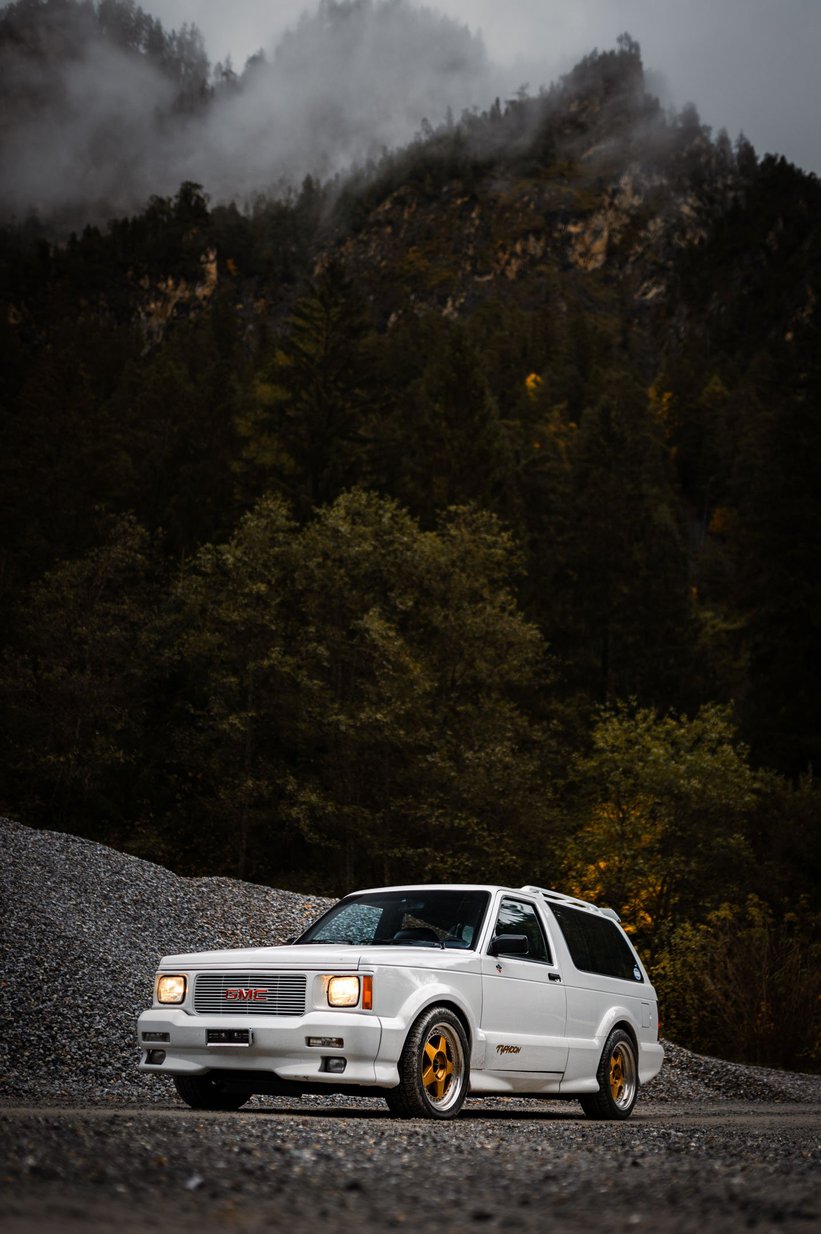
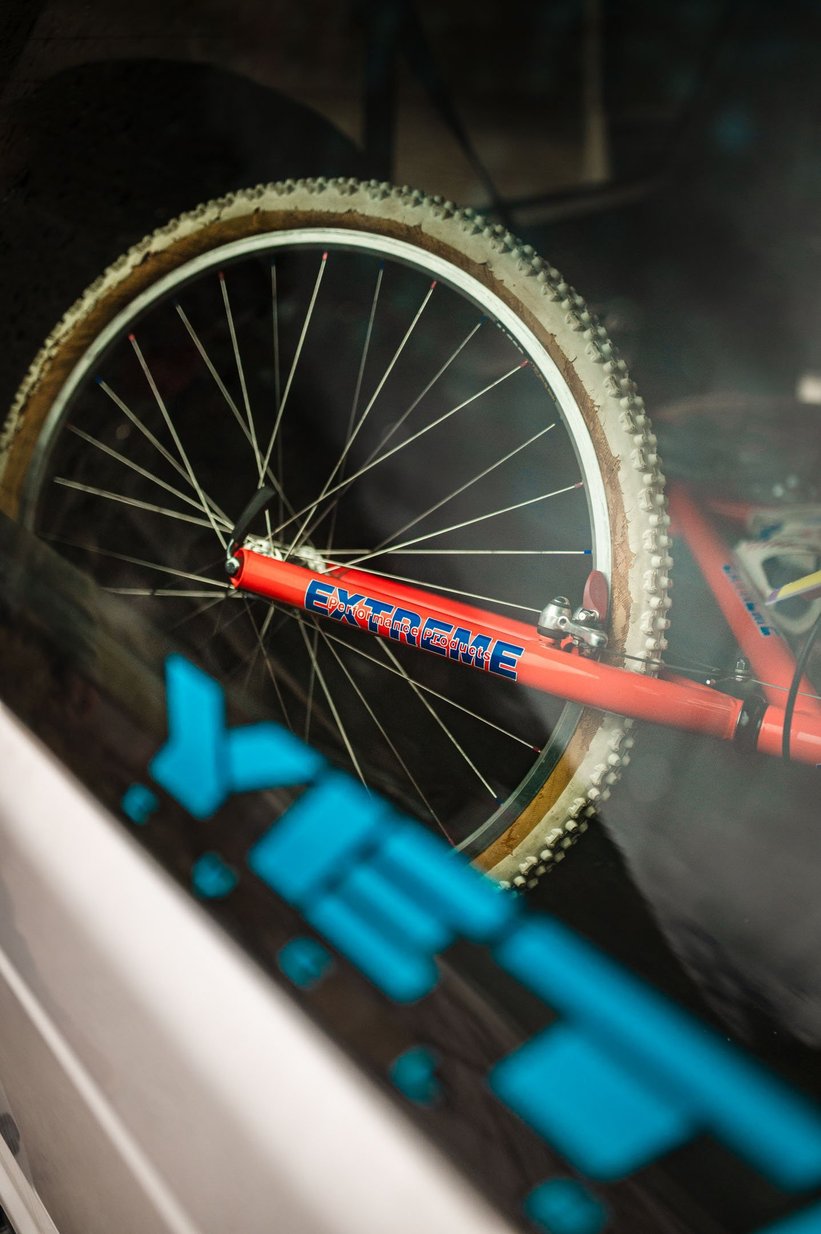
But the AMC Eagle isn't the only classic SUV in your collection, is it?
I also own a GMC Typhoon from the 1990s. I still remember standing at the traffic lights next to a two-door SUV like this when I was about 15 years old. It took off as fast and loud as a sports car and I wondered what the hell I had just seen. You have to remember: in 1990, the GMC Typhoon accelerated from 0 to 100 km/h in 4.5 seconds – the only other cars that could do that at that time were a Porsche 959 or a Ferrari F40. Under the hood was a 4.3 liter V6 turbo engine with 270 hp, which was often tuned. You could definitely get 500 hp out of it, but the automatic transmission didn't last long. And you weren't allowed to drive too fast into the curve. But the design is typically 1990s, I like that. Otherwise, I'm impressed by the rally cars from this era: Toyota Celica GT, Subaru Legacy and Mitsubishi Evo. You can have a lot of fun here in the Graubünden mountains. The trade in American cars from the early 1990s and Japanese cars from the late 1990s is my second mainstay in addition to the bicycle collection, which I constantly mix and expand.
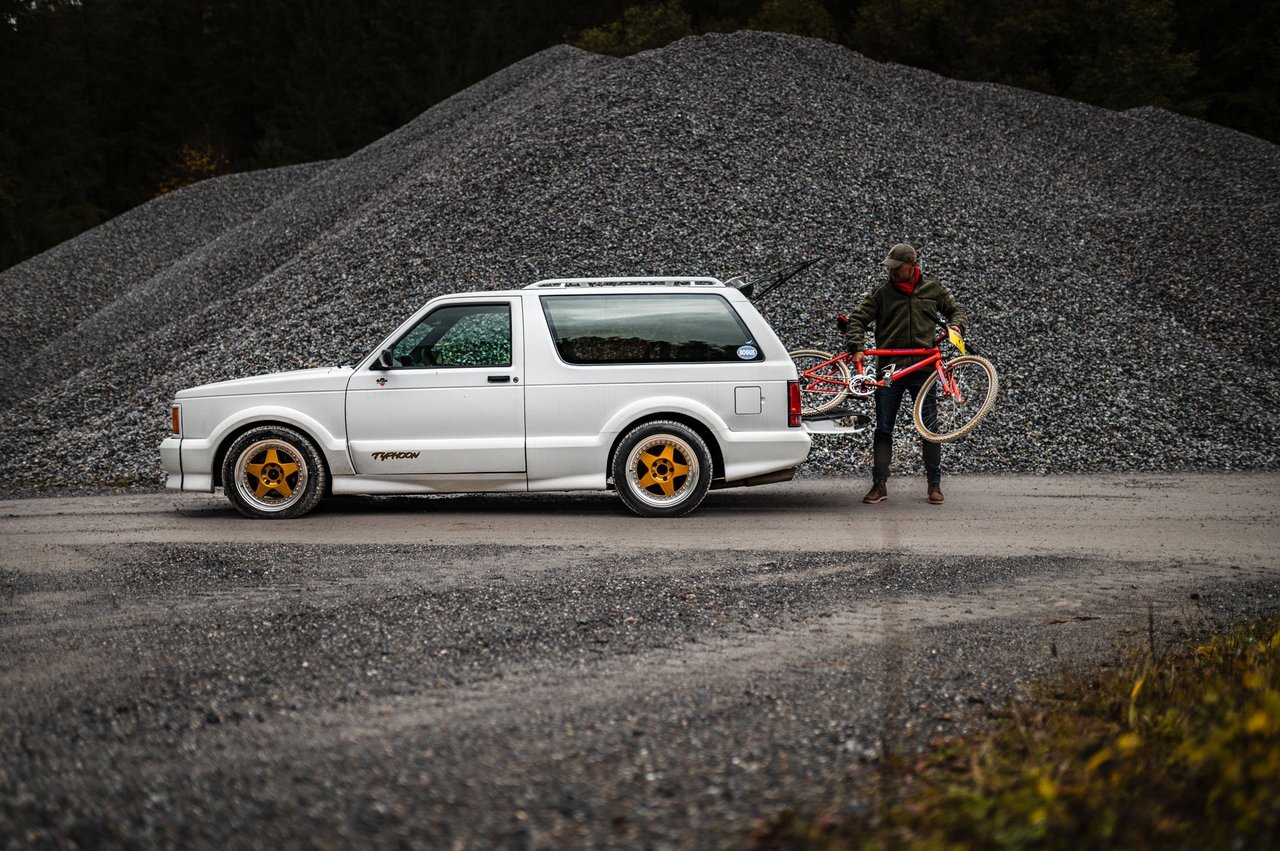
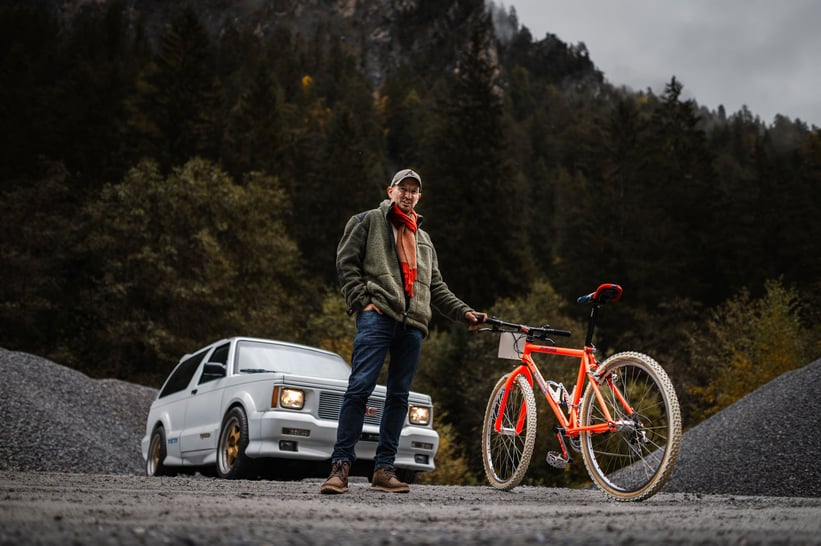
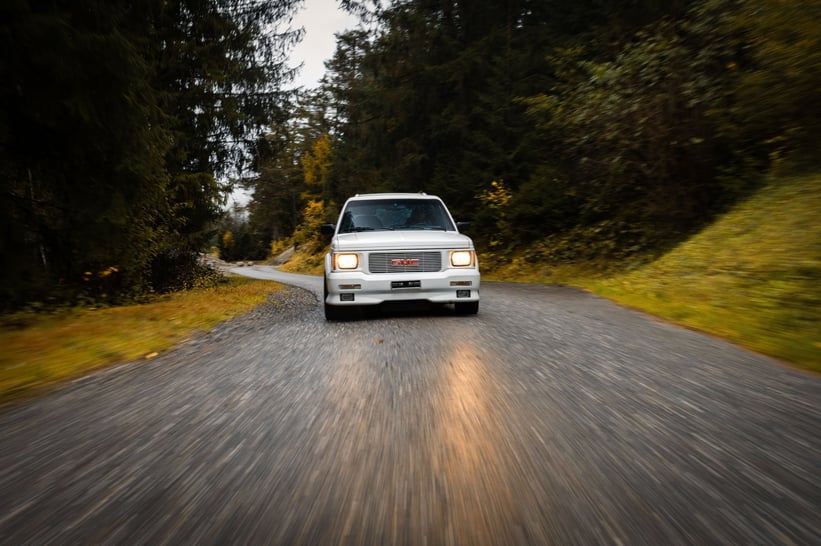
Finally, to bridge the gap between cars and bikes again: Are there any other car-related bikes in your collection besides the Lotus 110?
Absolutely. For example, there is a Minora Takeoff here. It was designed as a folding bike so that it fits in the luggage compartment of a Porsche 964.
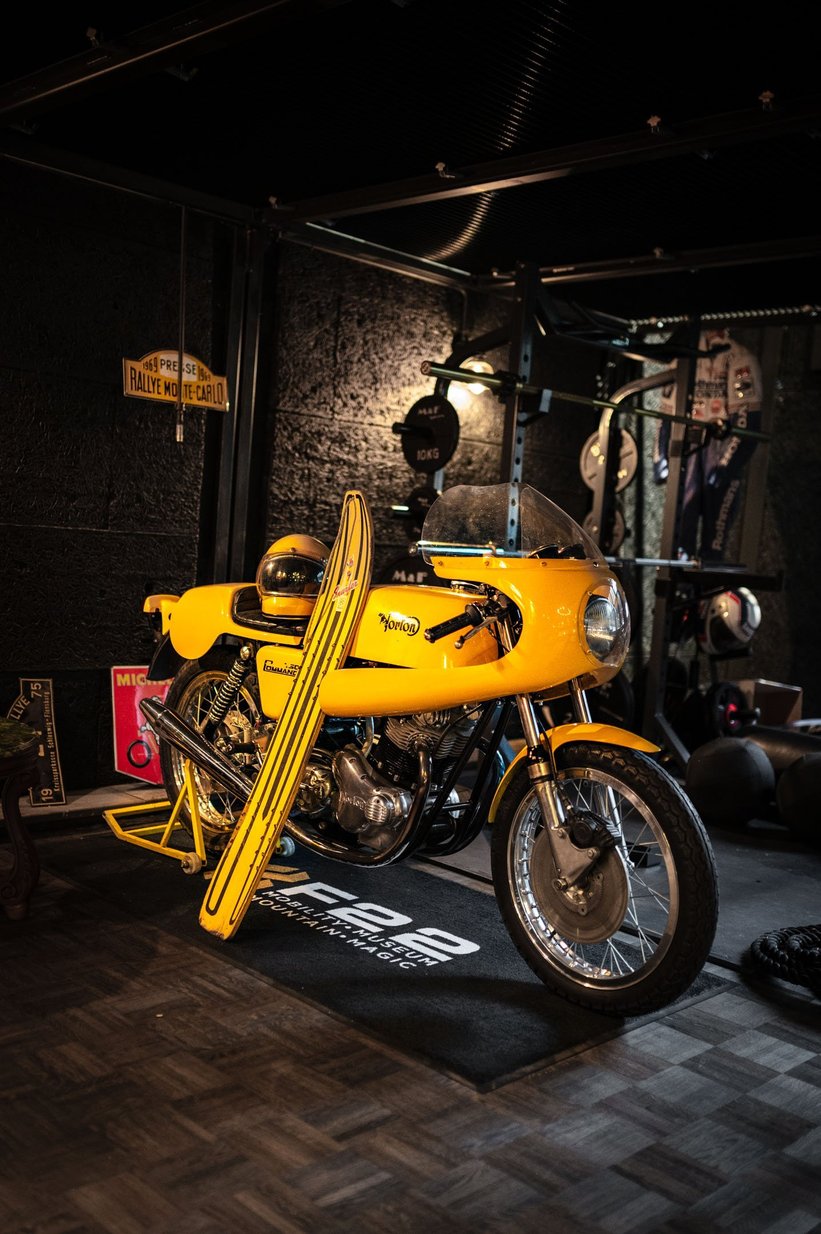

Many readers will ask themselves: can you visit the F22 Museum?
Absolutely. My goal is to open the museum to groups once a month. If you would like to take a look at the collection and mobilize a few friends, please feel free to contact me. With my mix of racing bikes, motorcycles and cars, I also hope to contribute something to communication between road users. Unfortunately, there is a lot of potential for conflict on the alpine roads – but the passions are usually very similar. If people came here, got into contact and learned a little more about the passions of their fellow human beings and alpine pass lovers, it would be a great pleasure for me.
Photos: Andrea Klainguti for Classic Driver



































































